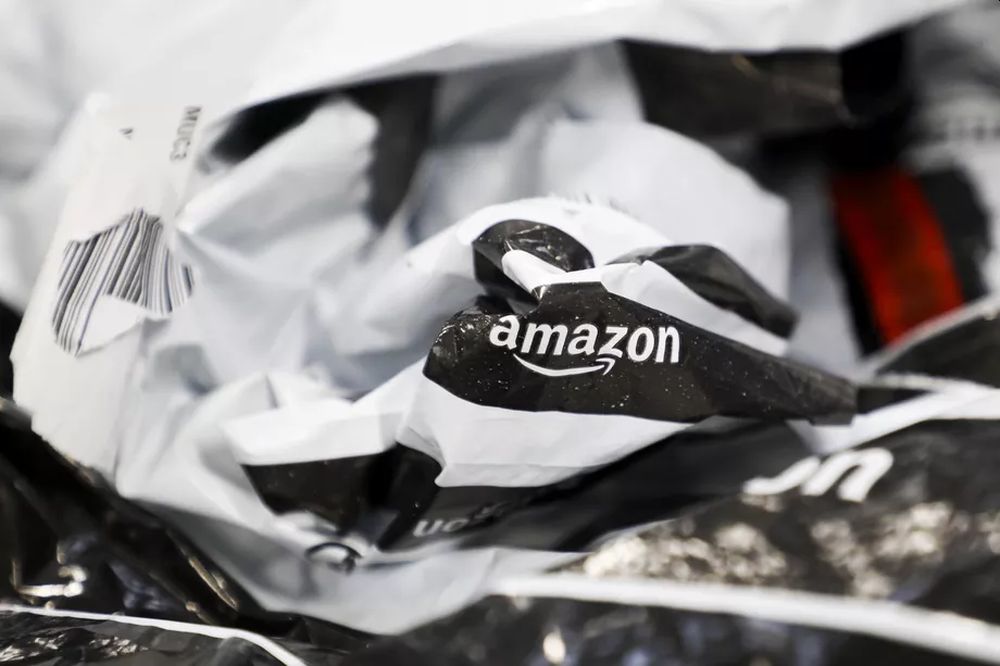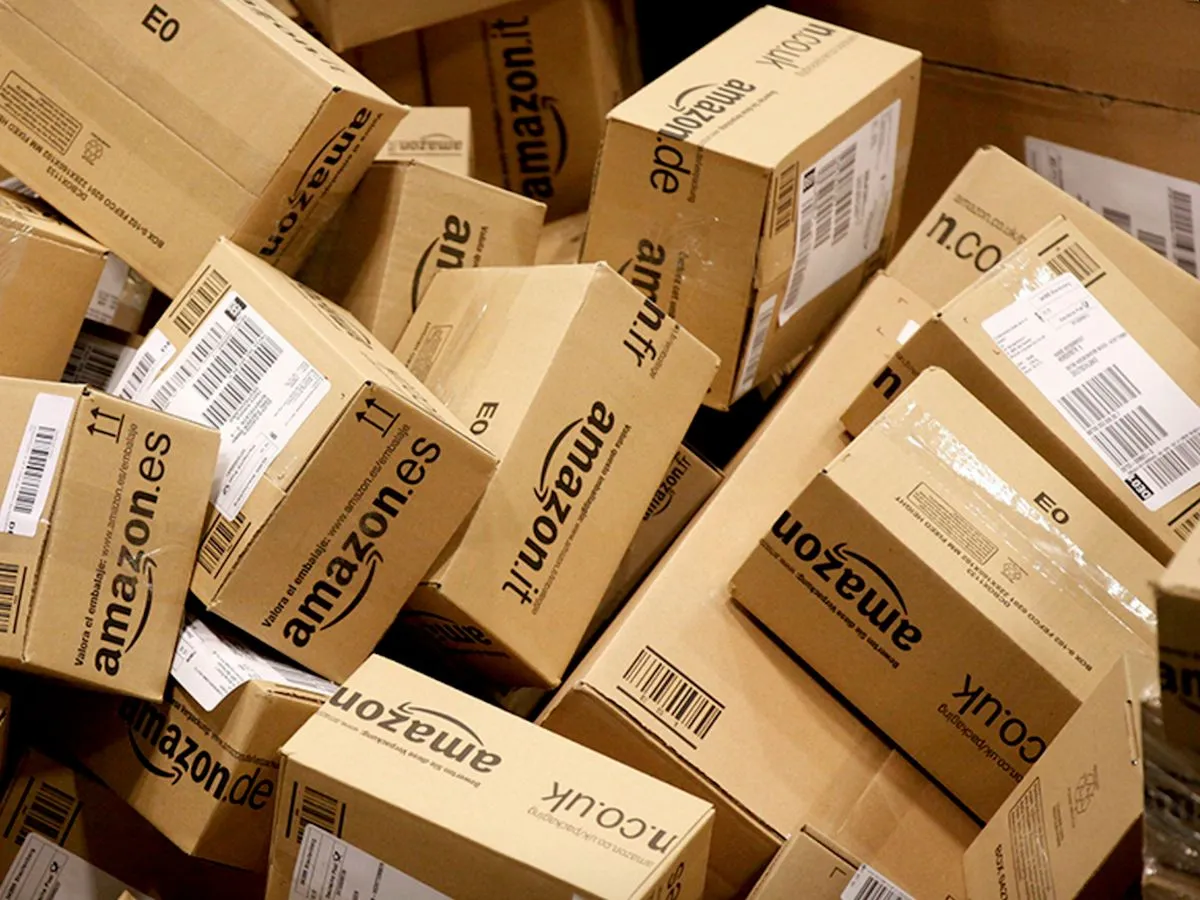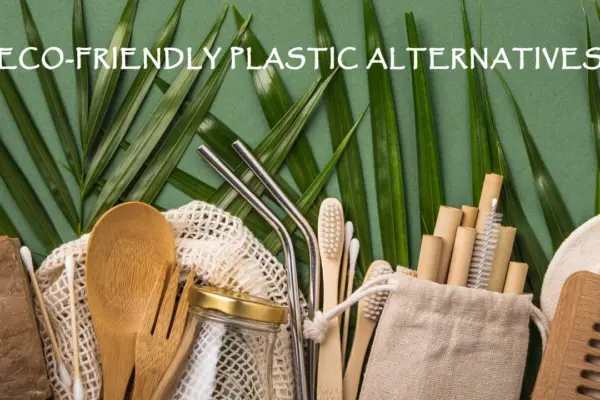Discarded Packaging Waste from Amazon Puts Environment in Peril
With a fast pacing lifestyle, we have accustomed to online shopping trends; and with that habit, we have all contributed to a mountain of discarded packaging waste. The packaging waste is choking the planet, and much of that is ending up in the oceans. Online retail is certainly not entirely responsible for all this waste, but it sure contributes a lot to the garbage pile. E-commerce packaging waste becoming a bigger issue helps to unpack the problem.
The online retail Amazon – which grew by 16 percent last year in the US – is one of the world’s biggest online shopping channels to deliver stuff with speed and convenience. And as consumers, we turn a blind eye to the environmental cost of online retail, particularly when it comes to packaging; and retailers don’t bother for the health of the environment.
About 165 billion packages are shipped in the US each year, with the cardboard used roughly equating to more than 1 billion trees. This is comprised of the air pillows, bubble wrap, and other plastic packaging items added to the approximately 7 billion Amazon packages delivered in 2019, according to news accounts.
Oceana’s Senior Vice President, Matt Littlejohn,
The amount of plastic waste generated by the company is staggering and growing at a frightening rate. Our study found that the plastic packaging and waste generated by Amazon’s packages is mostly destined, not for recycling, but for the landfill, the incinerator, or the environment including, unfortunately, our waterways and sea, where plastic can harm marine life. It’s time for Amazon to listen to its customers, who, according to recent surveys want plastic-free alternatives, and make real commitments to reduce its plastic footprint.
Table of Contents
Report on Packaging Waste from Amazon
The nonprofit ocean advocacy organization Oceana has released a new report regarding Amazon’s plastic pollution. The report estimates that Amazon was responsible for 465 million pounds of plastic packaging waste last year; while Amazon says that figure is exaggerated by over 350 percent. The online retailer claims that it uses a quarter of Oceana’s estimate. But even with those numbers, Amazon still used over 116 million pounds of plastic packaging in 2019.
According to the report,
[Amazon] continues to, in response to questions about plastic use, offer anecdotes about packaging weight rather than transparency. Even the low number claimed by the company for its plastic packaging footprint would still be an enormous amount of plastic waste — enough to circle the earth over a hundred times in the form of air pillows and to cause very large problems for the oceans.
The lightweight characteristic that makes plastic, sought-after packaging material for companies like Amazon has created a huge problem for the world’s oceans. The lightness of the non-biodegradable material makes it easy to blow down a storm drain or a strong gust of wind to push plastic debris into the sea.

Image: Beata Zawrzel
Landfills have been overburdened with the packaging waste, and when this garbage ends up in oceans, it can prove fatally injurious to the marine animals. In 2019, a whale off the shores of the Philippines was found with 88 pounds of plastic in its stomach. Given the statistics, there is a big environmental cost as more people shop online and a greater share of leftover packaging will end up in the ocean.
Since Amazon hasn’t publicly released numbers on its plastic pollution, Oceana tried to track its packaging pollution numbers. According to Anne Schroeer, a director of strategic initiatives at Oceana,
What you don’t measure you cannot manage. So we had to estimate this. Obviously, it would be much better if Amazon would publish their plastic footprint.
Staggering Figure Estimation
The organization used an indirect way to try to figure out how much plastic waste Amazon creates – which is why there is such a big inconsistency between its figures and how much figure Amazon says it actually used. To reach its 465 million pound approximate, the non-profit gathered data from packaging industry analysts on the amount of plastic packaging used around the world. Then, the assessment evaluated that Amazon’s share of plastic waste matched that of its share of the e-commerce market.
Also Read: Big Brands Pledge to Eliminate Single-Use Plastic
Using that hypothesis, Oceana estimated that in the last year, up to 22 million pounds of online retailer’s plastic packaging waste contaminated freshwater and marine ecosystems across the globe. That projection was based on a study published earlier this year that speculated that 11 percent of global plastic waste wound up in aquatic ecosystems. However, that study is not partial to packaging waste, which makes it complicated to use its data as a way to exact the quantity of Amazon’s contribution to plastic pollution to various water bodies.
Amazon customers strongly want the company to eliminate plastic packaging. Oceana surveyed more than 5,000 Amazon customers in the U.S., Canada, and the UK in 2020 and found that 86% were worried about plastic pollution and its impact on the oceans; 92% were disappointed that plastic recycling does not work; and 87% displayed desire for Amazon and other major online retailers to offer plastic-free packaging choices at checkout.
Amazon’s Changing Policies
While Oceana’s estimation of plastic pollution contribution of the online retailer is quite unnerving, Amazon has denied its plastic packaging waste to be so high. A spokesperson for Amazon said in a statement,
We share Oceana’s ambition to protect and restore the world’s oceans, and we support the reduced use of plastics. However, Oceana has dramatically miscalculated Amazon’s use of plastic.
Reportedly, Amazon has taken measures to reduce the amount of waste its packaging generates, such as sending items in their original packaging rather than boxing them up with more plastic and cardboard. The company says that it is cut more than 900,000 tons of packaging material since 2015. It has also developed a padded paper mailer in 2019 as a recyclable alternative to the plastic packaging the company uses.
While bags and envelopes made out of plastic film can technically be recycled, much quantity of it is probably tossed away. In most cities, curb-side recycling programs don’t admit plastic film. Most Amazon customers require to bring it to a close by drop-off location that does accept that type of plastic; but most think it is the too much of work and discard the plastic packaging.

Image: Green Queen
Oceana surveyed 600 Amazon Prime customers in the US in May, of which less than two percent of shoppers said they made the effort to get their used plastic packaging to recycling programs. According to a 2017 study, only nine percent of the entire world’s plastic waste has ever been recycled.
Oceana believes that Amazon can enhance its efforts to reduce plastic packaging waste, and sees the changes it’s made in India as a good instance. This June, Amazon India announced that it eliminated single-use plastics in its packaging at its fulfilment centers. The shift followed India’s target to eradicate single-use plastics by 2022. Amazon also recommends “packaging-free” delivery over 100 Indian cities – items are delivered in unique packaging from the manufacturer and orders with numerous items are delivered in reusable bags.
E-Commerce and Packaging Waste
Prior to the Internet, the logistics for traditional retail were simple and linear – goods were shipped in bulk to a warehouse and then to the store, where people bought them old-school style. The system for e-commerce is much more complicated and includes many more hands.
Retailers also want to ensure that items arrive in perfect condition – and that can result in over-packaging, most of which is non-biodegradable. Apparently, an average box is dropped 17 times, which is why you receive a small package inside a relatively large box filled air-bags – that is effective, but wasteful, too.
It does seem that both shoppers and retailers are beginning to acknowledge the packaging waste problem. Amazon has a “Frustration-Free Packaging Program” designed to “produce less waste and put an end to ‘wrap rage’.” Envelopes have replaced boxes for smaller shipments, and a system has been introduced to ship products in their original packaging, rather than doubling it up.
Amazon claims to have reduced nearly a quarter of a million tons of packaging materials from 2007 to 2017, avoiding 500 million shipping boxes. The online retailer also asks its customers for packaging feedback after shipping items to enhance its delivery service.
Other big online retailers appear to be similarly motivated, could be partial to anticipate the backlash. Walmart has a “Sustainable Packaging Playbook.” In China, e-commerce giant Alibaba and L’Oreal are partnering on “green packaging.”
Many start-ups are implementing responsible packaging techniques. Limeloop is pioneering durable shipping pouches that are recycled from billboard wraps and intended to be reused nearly 2,000 times. A European company called Repack not only promotes re-use but has a reward model, offering an incentive for customers to return the packaging rather than discard it carelessly.


